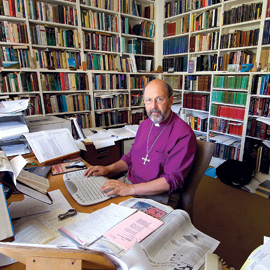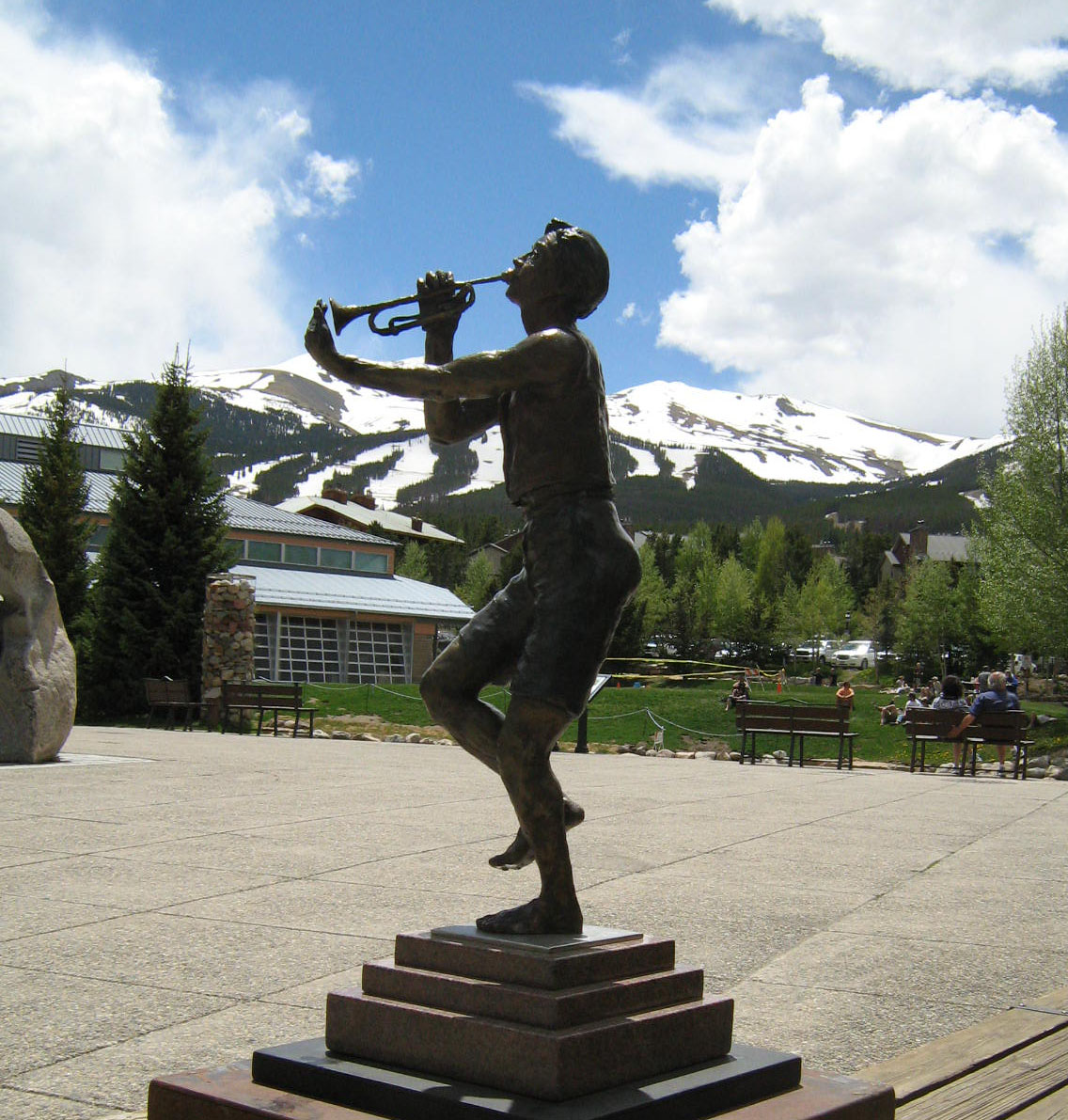 Dallas Willard is one of the best thinkers and writers in the world today; it is a blessing to Christ's church that he is a believer, and focuses much of his attention to matters of spiritual formation. Below is his article on Discipleship. It is a fascinating exploration by a man who has devoted his life to serving God.
Dallas Willard is one of the best thinkers and writers in the world today; it is a blessing to Christ's church that he is a believer, and focuses much of his attention to matters of spiritual formation. Below is his article on Discipleship. It is a fascinating exploration by a man who has devoted his life to serving God.
Discipleship Article for the Oxford Handbook of Evangelical Theology, edited by Gerald McDermott, 2010.
How one thinks of discipleship within evangelicalism depends upon how one draws the line around that movement. If one draws the line, as is now common, to include only the "evangelicalism" that emerged from the conservative-to-fundamentalist churches of North America after World War II,then there is very little to say about discipleship there except what is anecdotal—and there is not a lot of that.There has simply been no consistent general teaching or practice under the heading of discipleship among evangelicals of this period: none that would be recognizable as discipleship in terms of biblical teaching or of the Christian past. In the post WW II period the strongest association of evangelicalism was with evangelism, and for many citizens of North America the only thing they knew of evangelicals was that they are evangelistic.And indeed they were. They were intent upon proclaiming a gospel of"salvation" and upon winning converts to Christ.
The most visible evangelical of the period was the world-renowned evangelist, Billy Graham. And the sub-group of evangelicals most associated with programs of discipleship, the Navigators, was focused upon winning converts—converts who were explicitly recognized by them as not being disciples until an optional further stage in commitment.
Being a disciple was, for them, to be in training to become a soul winner, and discipleship was the process of training you underwent (under the direction of "workers," people of a third stage of commitment and development) to enable you to win converts.1
The slogan of the Navigators was "To know Christ and to make Him known." Their aim, as they said, was "to produce reproducers."
This vision was firmly tied to the version of the Gospel and of salvation that dominated evangelicalism during the period. It was strictly a gospel of forgiveness of sins and assurance of heaven after death upon profession of faith in Jesus Christ—or, minimally, profession of faith in his having suffered the penalty for our sins upon the cross. If you believed in his death as your substitute, you were a Christian, even though you never became a disciple.
Many of the Navigators were certainly among the finest followers of Christ from any period of Christian history. Their founder, Dawson Trotman, wasan ardent disciple of Jesus by any sane standard and one of the greatest of 20th-century Christ followers.2
But as disciples, Navigators were far better than their theology and their program.They have blessed and continue to bless the earth with their lives and testimonies. Nevertheless, in them the essential disconnection between post WW II evangelicalism and discipleship prevailed and still prevails today.
Relying On Correct Beliefs Alone
During the mid- to late 20th Century, evangelicalism came to define itself in terms of the profession of correct belief alone. Holding correct doctrine was standardly presented as the condition of forgiveness of sins. Obsessed with threats from modernism and liberal theology, on the one hand, and from the looming presence of an allegedly "scientific" world view on the other, evangelicalism undertook to "contend earnestly for the faith which was once for all delivered to the saints." (Jude verse 3)
This meant to defend the truth of doctrines taken to be essential to a"saving" faith in Christ. Ironically, this phase of evangelicalism developed—as a social form—into a particular version of "nominal Christianity." It had traditionally defined itself in opposition to nominal Christianity, emphasizing as it did an individualized "birth from above" and an ongoing personal experience of God.
But its actual "nominal" status is the reality back of the statistics often quoted at the beginning of the 21st Century, that show little or no behavioral difference between the lives of contemporary evangelicals on the whole and the lives of those outside its circles. Being a Christian in evangelical terms came to be a matter of professing belief in time-honored tenets of traditional Christianity, with a few additional points about the nature and authority of the Bible and about eschatology.3
Called To a Closer Walk
But that left a deficiency which came to be deeply felt—especially among evangelicals most seriously devoted to Christ. This felt need for experience of God, for a life in God, expressed itself in various ways—ways always in some tension with the prevailing theology and with the most prominent evangelical leaders and teachers of the time.
This tension has been an enduring problem within modern evangelicalism. It has expressed itself in various ways:for example, through interest in what was viewed as "higher life" or"deeper life" teachings. The "Keswick Movement" (associated with the Keswick Convention, running from 1875 to the present 4) was centered on these teachings, and interest in them was cultivated by such authors as Andrew Murray (1828-1917) and F. B. Meyer (1847-1929).
A slightly older work by Hannah Whitall Smith, The Christian’s Secret of a Happy Life (1875), was very influential in this vein, along with numerous similar writings, and more contemporary works such as Rosalind Rinker’s book, Prayer: Conversing with God (1959), which presented prayer as a lively conversation with God. These and similar works revitalized the "devotional life" of many evangelicals, often taken by them to be "discipleship" itself.
Still older Catholic writers such as Thomas á Kempis (The Imitation of Christ) and Brother Lawrence (The Practice of the Presence of God) stoked the hidden fires of evangelical devotion—simultaneously confirming the grim suspicions of many leaders and teachers that the "deeper life" seekers and teachers were not properly evangelical. They were not satisfied with just believing the essentials or with "the pure milk of the word." The "Charismatic Movement"—breaking out in the early 20th Century in its "Holiness" form, and reviving in the post WW II period without the emphasis on holiness—was yet another challenge to the adequacy of this most recent "official" form of evangelical Christianity. Many evangelical leaders simply rejected the charismatic experience, and taught (some still teach) that charismatics are misled and dangerous to the faith.
This was largely for fear that their "experiences" were not biblical and would undermine the authority of the Bible. But the hunger for and reality of an interactive life with God (the Holy Spirit) was not to be denied to people generally, and today the most effectual carriers of "evangelical truths" to the world are in fact charismatics. However, the focus upon spiritual gifts that characterizes the charismatic groups and teachers still does not include a realistic and theologically coherent teaching and practice of discipleship.
It is still true of them that to be a Christian—even a "Spirit-filled" Christian—does not require that you be a disciple of Jesus Christ, or that you, through the course of discipleship, take on the character of Jesus Christ in your life as a whole. The widely felt inadequacy of the official 20th-century evangelical teachings to life (however effectual for death and judgment) also expressed itself by the emergence of "Christian Psychology" among evangelicals in the 1960s. This movement was a tacit acknowledgement that teaching the truth, and eliciting profession of the central doctrines, did not solve the problems of Christian living. As a result it was strongly resisted across a broad range of evangelical life.
By the 21st century, however, it had burgeoned into a vast profession, with extensive training and higher academic degrees available from the most prominent of evangelical educational institutions. It clearly intersects in aims and some of its methods with what would have counted as discipleship or training in following Christ atother times and places. Many of the larger evangelical churches and groups now provide psychological counseling as a major part of their ministry. Currently, Christian psychology is interacting with yet another significant tendency in evangelical life.
The emergence of "spiritual formation" among evangelicals toward the end of the 20th century was also a response to the felt need of many for a spiritual life, in addition to correct beliefs and outward practices. This need was associated with the increasing failure of "denominational distinctives" to constitute a spiritual existence or a life for the individual. It is rare to find evangelicals within these churches who could make a life of being a Presbyterian, Baptist, Catholic, Lutheran, Pentecostal, etc.
By contrast,"spiritual formation," like discipleship itself during some periods of the past, was associated with learning to live a remarkably different kind of life: one of pervading spiritual reality and transformed character. In its quest, spiritual formation among evangelicals reached out to learn from the Church and from Christians across the ages, on the one hand, and it also turned the individual’s focus toward redemption of their life as a whole.5
"Spiritual formation" edged—however obscurely or unintentionally—toward thinking of salvation, the essence of Christian deliverance, in more comprehensive terms than the after-life alone. Once again, prominent evangelical spokespersons, were uneasy.
But how one understands salvation turns out to be the key to what one makes of discipleship, as well as to any possible renewal of evangelicalism as a redemptive force for the future.Post WW II evangelicalism simply had no essential place for discipleship in its view of salvation.
Evangelicalism from Wesley to Finney
We must draw the line around evangelicalism beyond post WWII America if we are to see any close connection between its vital core and discipleship to Jesus Christ. It is sometimes said that evangelical Christianity began in the 18th Century, with people who were willing to preach out of doors at a time when that was a very radical step.
The reference to "preaching out of doors" picks out the ministries of George Whitefield (1714-1770) and John Wesley (1703-1791), but also of many preachers who followed after them in the settlements and frontiers of America. Jonathan Edwards (1703-1758), though he did not regularly "preach out of doors," is often regarded as historic evangelicalism’s most competent theologian (we must not forget his overlap with Puritanism). Some have even thought of evangelicals as an American brand of Protestant Christianity. This unfortunately results in seeing contemporary evangelicalism as having a greater continuity with the evangelical past than it actually has.
The "revivalism" of George Whitefield, John Wesley, Jonathan Edwards, and even up to Charles Finney (in the first half of the 19th Century), was a very different kind of thing from the "revivals" of the 20th Century, which were almost entirely focused upon converting the lost. The revivals of the 1800s gradually transmuted into evangelistic campaigns or "outreach." The earlier evangelical "revivalists," by contrast, focused upon "stirring up "Christians or church members, and urging them on to overall holiness of life and devotion to God.6
That is why the word "revival" was used by them. What they did naturally led into a process of learning and growing in holiness and power, as the New Testament clearly presupposes.
Evangelizing was a natural side effect of the revival of slumbering Christians, and the evangelizing of this earlier period easily saw discipleship to Jesus as a natural development from conversion and confidence in Jesus Christ as Lord, and therefore Master and Teacher.
New Testament language fits well with this earlier phase of evangelicalism, as compared to today’s: "Work out your salvation with fear and trembling; for it is God who is at work in you, both to will and to work for His good pleasure. Do all things without grumbling or disputing; that you may turn out to be blameless and innocent, children of God above reproach inthe midst of a crooked and perverse generation, among whom you appear as lights in the world." (Phil. 2:12-15)
This calling and reality was not thought by earlier evangelicals to be for a special group of Christians—perhaps"full-time Christian workers"—but as the opportunity and obligation of everyone who placed their hope in Christ. It was a shift away from this viewpoint that opened the way for 20th Century evangelicalism, dominated by a particular version of "Calvinist" theology and its peculiar soteriology.
Eighteenth- and nineteenth-century evangelicalism made an essential place for holiness and wholeness, for transformation of character and for ordinary occupations as divine calling. An excellent place to see this at its best is in the sermons and writings of Phillips Brooks (1835-1893). It was entirely natural to the underlying theology of the earlier period that Wesley and Finney, both "revivalist" in the earlier sense, developed and applied elaborate, scripturally based accounts of Christian perfection as something continuous in its nature with Christian salvation.
Their theology was essentially Armenian and thus their understanding of grace and salvation was quite different from that of their 20th-century counterparts. While discipleship could be seen as a natural part of salvation as they understood it, the later evangelicals have been more careful to avoid "perfectionism" than to avoid sin. They favor bumper stickers that say, "Christians are not perfect, just forgiven." Just forgiven. There lies the problem for contemporary evangelicalism with respect to discipleship. What does discipleship have to do with forgiveness? With saving faith?
The Sources of Evangelicalism in Luther
To respond to these questions adequately we must push the time line further back, to the point in Western history where the terminology "evangelical" enters the stream of Christianity.
The language originates in 16th-century Germany, amidst the turmoil and violence of the Protestant Reformation. People became known as "evangelicals" because of their appeal to the Gospels, the "Evangels," of the New Testament, against the authority and power of traditional institutions and sources.
It was at Martin Luther’s (1483-1546) suggestion that the new churches emerging out of the turmoil called themselves "evangelical" ("evangelische"). Philip Melanchthon (1497-1560) drew up a standard form of "evangelical" worship service, with Luther’s approval; and Luther himself wrote out his "Shorter Catechism" in1529. Preaching became the centerpiece of the public meeting, and church architecture changed to accommodate that and make it easier for the attendees to hear the sermon.
Congregational singing was introduced and Luther became a writer of great hymns. For many people throughout Europe still today,"evangelical" simply means "Protestant." What lay at the heart of evangelical religion at its origin? Two things: (1) devotion to the Bible as the ultimate source of authority and divine life, and (2) personal experience of conversion to and of practical communion with God. These, with the fundamental tensions built into them and with all ofthe blessings and problems they present, are the bedrock of evangelical religion, today as in the past. They in fact are what have sustained and driven evangelical religion, for individuals and for groups, up to its latest surges of charismata and "spiritual formation."
The followers of Luther soon drifted from these two basic elements in various ways, into splintering"orthodoxies," institutional deadness, and social conformity. The landscape of history is littered with the skeletons of these "orthodoxies," and even with the skeletons of further movements that arose to revive those skeletons. Pietism (17th Century) soon arose, to counteract or revive the Lutheran orthodoxy that settled over much of Europe within a century or so after Luther.
Then there is a current of continuity running from the radical faith of Luther himself, though the great Pietist teachers, Philipp Spener (1635-1705) and August Hermann Francke(1663-1727), to the Moravians, on to Wesley, and to the holiness, "Deeper Life," and Charismatic streams running through or alongside the later evangelical churches, right up to the "spiritual formation" impulses of the present times. Basic evangelicalism is a theologia cordi, "a religion of the heart," joined in an unstable relationship to the exclusive authority of Scripture.
The influence of this basic evangelicalism on other social formations and denominations of the Christian Church remains constant and irrepressible. Its ever-present insistence that being a Christian is a matter of a life one lives founded in biblical teachings and consisting in personal interaction with God and the various facets of his kingdom, connects with deep hungers of the human soul.
The effort to force the basic genius of evangelicalism into the armor of a more particular orthodoxy—a recurring tendency running rampant on the heels of Luther and painfully oppressive at later times including post WW II America—is perpetually resisted by the stream of spiritual life flowing from scripture and from the intermingling of human life with the Trinitarian presence.
The New Testament Picture of Discipleship
Evangelicalism always looks to the Bible as the point of reference from which concepts are defined, practices legitimated, and principles adopted. So we must ask what can be made of discipleship and of the disciple of Jesus as seen in the life of the New Testament. Indeed, as it turns out, the New Testament "disciple" is by no means a peculiarly "Christian" innovation.7
The disciple is one aspect of the progressive and massive decentralization of Judaism that began with the destruction of the first Temple (588 BC) and the Babylonian exile, and proceeds through the dispersal of the Jewish people among the nations that followed the destruction of Jerusalem in 70 AD.
During this period the synagoguee merges as the center of the local Jewish communities, devotion to the Torah becomes the focus of the synagogue, and the rabbi or "great one" stood forth in the role of interpreter of Torah: "By degrees, attachment to the law sank deeper and deeper into the national character…. Hence the law became a deep and intricate study. Certain men rose to acknowledged eminence for the iringenuity in explaining, their readiness in applying, their facility in quoting,and their clearness in offering solutions of, the difficult passages of the written statutes."8
The rabbi with his coterie of special students was a familiar feature of Jewish religious practice by the time of Jesus. There was no one way in which to become a rabbi in the Jewish society of Jesus’ day. It is true that most of those who became rabbis did so by studying under a rabbi, and having a "formal" training had some obvious advantages. But there was no "licensing" process, and an element of the Old Testament prophet carried over to the role of rabbi. A rabbi could, like the prophet, be "from nowhere."
His was a performance-based status, and public recognition as a rabbi was a response to the power of the individual’s words and deeds, not to their "credentials." The usual path of advancement seems to have been through the schools for young people around the synagogue.
Some students did very well, memorizing huge portions of scripture and listening to interpretations by teachers. Then, if they wished, they might approach a rabbi requesting him to take them as their disciple. If accepted, there would follow a lengthy period of close association with their rabbi—hearing, observing and imitating. They were simply with their rabbi, serving him and becoming like him in thought, character, and abilities.
Jesus’ observation that "a disciple does not rise above his teacher; but everyone after he has been fully trained will reach his teacher’s level" (Luke 6:40), was both a commonplace observation about the nature of the rabbi/disciple relation and—as the context makes clear—a warning about the limitations and dangers of that arrangement. ("Can a blind person guide a blind person? Will not both fall into a pit?" (Luke 6: 39)
Jesus and His Disciples
However, Jesus did not simply fit himself into the more or less standard model of the rabbi. He had no "formal" education beyond the synagogue schools and did not become a disciple of a rabbi. He did receive a (very unorthodox) stamp of approval from John the Baptizer, but not as his disciple. He was known to the people around him as uneducated. Amazed at the depth and power of his words they exclaimed: "How does this man have such learning,when he has never been taught?" (John 7:15)
Also, Jesus did not accept disciples upon application, testing them to see if they were "worthy." He personally selected—though not from "the best and the brightest" in his community—those he would especially train. There was a larger outer circle of people who seem to have just showed up in his presence and received training of various degrees (the "other seventy" of Luke 10:1, for example, and the group in the "upper room" of Acts 1:13) Often would-be disciples were subjected to severe discouragement by him (Matt.8:18-22, Luke 9:57-62 and 14:26-33).
He also leveled scalding criticisms at the proud practitioners of the law in his day (Matt. 23:13-33, Luke 11:39-52) and prohibited his followers from being called "rabbi" and using other "respectful greetings" exchanged among those who took themselves to be highly qualified as teachers (Matt. 23:1-12). He was not "one of the boys," nor were his disciples to be.
Nevertheless, the basic nature of the rabbi/disciple relationship of his day was retained by Jesus and his disciples and, arguably, remains normative to this day. That relationship is very simple in description. His disciples were with him, learning to be like him. "With him" meant in that day that they were literally where he was and were progressively engaged in doing what he was doing. Jesus moved about the Jewish villages and towns, primarily around the Sea of Galilee, with occasional forays beyond that and especially to Jerusalem.
His main disciples ("apostles") were with him in all of this, and no doubt at considerable hardship to themselves and their families. Peter on one occasion plaintively remarks: "We have left everything to follow you" (Matt.19:27). It was no doubt a thought that often occurred to his disciples. As they traveled about he did three things in the synagogues,homes and public areas:
He announced the availability of life in the kingdom of God, he taught about how things were done in the kingdom of God, and he manifested the present power of the kingdom by amazing deeds (Matt. 4:23, 9:35, Luke 4:18-44).
Then, after a period of training, he set his disciples to doing the things they had heard and seen in him—continuing all the while to evaluate their work and to teach them as they progressed. This continued through his trial and death, and during his post-resurrection presence with them when he trained them in how he would be with them after his ascension, without visible presence. His instruction as he left was for his disciples to make disciples of all "nations"—of all types of people—and his promise was that he would be with them always until the end of the age. (Matt. 28:19-20)
The Method of ‘Being With’ Passed on Through Disciples
While the charge was to make disciples of Jesus and not of the disciples, the basic method—teaching, example, and imitation—remained the same as his immediate followers proceeded to do what he had told them to do.
The method was: to gather a group of people by telling the story of Jesus, featuring his resurrection and pending return, to show by example what it meant to live with him now, already beyond death, and to lead others into such a life of being"with Jesus, learning to be like him."
No New Testament text better fills out what this life of learning was than Colossians 3:1-17. The role of example and imitation in the learning community of disciples is often stressed in the New Testament.
Numerous statements from the Apostle Paul concisely state the strategy of being and making disciples. In one of his earliest letters to groups of disciples he reminds the readers of how " Our gospel [proclamation] did not come to you in word only, but also in power and in the Holy Spirit and with full conviction; just as you know what kind of men we proved to be among you for your sake.
You also became imitators of us and of the Lord, having received the word in much tribulation with the Joy of the Holy Spirit, so that you became an example to all believers in Macedonia and in Achaia." (1 Thess. 1:5-7)
Paul proceeds in this letter to spell out how he and his fellow workers lived "pure, upright, and blameless" in their conduct toward the believers, and to encourage them to "lead a life worthy of God, who calls you into his own kingdom and glory." (2:10-12) In 1 Corinthians he exhorts the believers to imitate him, to be "reminded of my ways which arein Christ" (4:16-17), and to "be imitators of me, just as I also am of Christ." (11:1)
In 2 Thessalonians he indicates that the readers "know how you ought to imitate us." He reminds them of how he led a disciplined life and worked hard to support himself, "not because we do not have that right [to support from them], but in order to offer ourselves as a model for you that you might imitate us." (3:7-9) To the Philippians he said: "Keep on doing the things you have learned and received and heard and seen in me, andthe God of peace will be with you." (4:9)
He elsewhere reminds Timothy that he had "observed my teaching, my conduct, my aim in life, my faith, my patience, my love, my steadfastness, my persecutions and suffering the thingsthat happened to me in Antioch, Iconium, and Lystra." (2 Tim. 3:10-11) And in an earlier letter he directed him to "show himself an example to thosewho believe." (1 Tim. 4:12) The writer of the letter to the Hebrews counsels his readers not to be sluggish, "but imitators of those who through faith and patience inherit the promises." (6:17)
They should "[r]emember your leaders, those who spoke the word of God to you; consider the outcome of their way of life, and imitate their faith." (13:7) As it was for "your leaders," the writer assures them, it will also be for you, and that is because "Jesus Christ is the same, yesterday and today and forever." (vss. 8-9) The point of this much misapplied verse is, as the context makes clear, that the nature of discipleship to Jesus and its outcomes does not change.
Transformation Through This Kind of Discipleship
Now this practice of discipleship in the communities of Christ followers—being with Christ learning to be like him, in part by being with those who are further along on that same path—is what lends realism and hope to the glowing pictures of his people that stand out from the pages of the New Testament. Such passages as Matthew chapters 5-7, John chapters 14-17, Romans 12, 1 Corinthians 13,Ephesians chapters 4-5, and Colossians 3 readily come to mind.
These are not just passages stating required behaviors, as laws might do—"Turn the other cheek" and so forth—not a new and sterner legalism. Rather, as expressing what lies "beyond the righteousness of the scribes and Pharisees" (Matt. 5:20), they are indications of what life becomes for those who are devoted disciples of Jesus Christ within the fellowship of disciples and under the administration of the Word and of the Holy Spirit.
A life of this quality is the "output" of disciples of Jesus who make disciples wherever they go, gather them in Trinitarian reality, and teach them in such a way that they come to do all that Jesus told us to do out of transformed personalities. What is now generally regarded as "normal Christianity" drops away with the "cleaning of the inside of the cup" (Matt. 23:25-26).
Discipleship is the status or position within which spiritual (trans)formation occurs. As we have noted, Post-WW II evangelicalism does not naturally conduct its converts and adherents into a life of discipleship, nor into pervasive Christlikeness of character—with the routine, easy obedience that it entails. What this most recent version of evangelicalism lacks is a theology of discipleship. Specifically, it lacks a clear teaching on how what happens at conversion continues on without break into an ever fuller life in the Kingdom of God.
How, to cite Paul’s language, does "the grace of God that brings salvation" discipline us, train us, in such a way that we turn from"ungodliness and worldly lust" to live lives that are "sensible, righteous, and godly in the present world"? (Titus 2:11-14; cp. Phil.2:12-15) How is it, exactly, that he who gave himself for us also "redeems us from all iniquity and purifies for himself a people of his own who are zealous for good deeds"? (vs. 14; cp. Eph. 2:10)
To such questions contemporary evangelicalism has no answer. Its doctrine of grace and salvation prevents it from developing an understanding of discipleship that makes discipleship ("being with Jesus learning to be like him") a natural part of salvation. The basic genius of evangelicalism as such, however, is never content to leave the matter there.
FOOTNOTES
1. This three-fold scheme is laid out in LeRoyEims, The Lost Art of Disciple-making (Grand Rapids, MI: Zondervan,1978), which long served as an unofficial guide for the work of Navigators.
2. See Daws: A Man Who Trusted God,Colorado Springs: Navpress, 1974.
3. There are, of course, many individuals among evangelicals today who would not accept this. Charismatics and heirs of thevarious "holiness" traditions would find it hard to swallow. But thenwhat is emphasized by them is still not discipleship.
4. Keswick is a town in the district of Allerdale, Cumbria-- in the "Lake District" of England, a center oftourism for centuries. Keswick became the venue for an annual Christian Convention beginning in 1875 and continuing today. It was a well-known source of "higher life" teachings for more than a century, and has been influential around the world.
5. The work of Richard Foster and his Renovaré ministry was highly influential in this direction.
6. On this consult Charles Finney’s lectures on Revivals of Religion, (Old Tappan NJ: Fleming H. Revell, n.d.; many editions) along with the works of Jonathan Edwards.
7. See the careful study of the history of the "disciple" in the world of the New Testament provided by Michael J.Wilkins, The Concept of Disciple in Matthew’s Gospel, as Reflected in the Use of the TermΜαθητής, Leiden: E. J. Brill,1988.
8. John M’Clintock and James Strong, edd., Cyclopaediaof Biblical, Theological, and Ecclesiastical Literature, Vol. VIII, NewYork: Harper and Brothers, 1894, p. 870. Return to text
BIBLIOGRAPHY
Bonhoeffer, Dietrich, The Cost of Discipleship (New York:Macmillan, 1966)
Longenecker, Richard N., ed., Patterns of Discipleship in the New Testament (Grand Rapids, MI: William B. Eerdmans Publishing Company,1996)
Henderson, D. Michael, A Model for Making Disciples: John Wesley’s Class Meeting (Nappanee, IN: Francis Asbury Press, 1997)
Howard-Brook, Wes, and Sharon H. Ringe, edd., The New Testament—Introducing the Way of Discipleship (Maryknoll, NY: Orbis Books,202)
Hull, Bill, The Disciple-Making Church (Grand Rapids, MI:Baker Book House, 1998)
Hull, Bill, Choose the Life: Exploring a Faith that Embraces Discipleship (Grand Rapids, MI: Baker Book House, 2004)
Law, William, A Serious Call to a Devout and Holy Life:Adapted to the State and Condition of All Orders of Christians (London:Griffith Farran & Co, n.d., Many editions)
Wilkins, Michael U., Following the Master: Discipleship in the Steps of Jesus (Grand Rapids, MI: Zondervan Publishing House, 1992)
Wilkins, Michael J., The Concept of Disciple in Matthew’s Gospel, (Leiden: E. J. Brill, 1988)
Willard, Dallas, The Great Omission (San Francisco:Harper San Francisco, 2006)
Willard, Dallas, The Spirit of the Disciplines (SanFrancisco: Harper and Row, 1988)
(This article was pulled from the following website--a terrific site with many great articles.)












